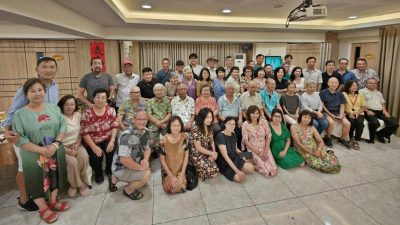By Dr Hadijah Yunos / Dr Mawadda Benhamza / Professor Dr Moy Foong Ming / Professor Dr Noran N Hairi

Global Cancer Observatory (GLOBOCAN) reported that in 2020, a cumulative new cancer and cancer death cases in Malaysia were 48639 and 29350, respectively.
The inability of cancer patients to receive adequate medical support are among the factors for higher mortality during the COVID-19 pandemic1.
Cancer patients are also at higher risk of developing more serious complications, a higher rate of hospitalization, and even death.
Malaysia has seen a surge in COVID-19 incidence in recent weeks. As one the measures to contain the COVID-19 virus, the government need to enforce nationwide total lockdown. During this period, most of the 'regular visits' for cancer patients have either had to be postponed or canceled.
Thus, in some countries such as in Europe, telemedicine allows doctors to take care of their patients remotely. Perhaps we could provide similar service here in Malaysia.
Telemedicine is not new in Malaysia. In 1997, the Telemedicine Act or Akta Teleperubatan 1997 was enacted to strengthen healthcare delivery via telecommunications, information and multimedia technologies2.
It is used to reshape the healthcare delivery system by becoming more virtual, distributed, and integrated, resulting in better healthcare delivery and efficiency.
However, for the past 24 years, the Act has not yet been enforced and it was mainly for provider-to-provider consultation.
Other barriers to patients while accessing telemedicine are technical issues, broadband access, and digital literacy. These apply more towards the patients from a low-income family and those who live in remote areas.
As of now, the broadband access is not widely available across the country and patients need to be trained and literate before they could start to use the technology.
All these issues require involvement from other agencies such as the ICT department before telemedicine could be utilized among them. However, Malaysia could adopt the success story from India-the Kerala Oncology Network or the OncoNET Kerala, which was launched in 2001.
The project consists of an oncology network at Regional Cancer Centre (RCC), Trivandrum and telemedicine services in cancer detection, treatment, pain relief and patient follow-up at RCC and its centers which are far away from the hospital.
All the centers were converted into teleclinics, connected with RCC through their satellite communications3.
It is timely for Malaysia to revise and enforce its Telemedicine Act to allow for patients' consultation and prescription, as it offers benefit for oncology services especially during lockdown period.
Other than that, partnerships between public health systems and entrepreneurial providers of telemedicine are also important to ensure the success of the implementation of telemedicine particularly among those in remote and low-resource settings.
References:
1 Hanna TP, Evans GA, Booth CM. Cancer, COVID-19 and the precautionary principle: prioritizing treatment during a global pandemic. Nature Reviews Clinical Oncology. 2020;17(5):268-70.
2 Telemedicine Act. Sect. 5 (c) (d) (1997).
3 Kumar A, Manoj G, Rajan B. OncoNET Kerala – A Paradigm for Cancer Management in Developing Countries, 2005.
(Dr Hadijah Yunos, Dr Mawadda Benhamza, Professor Dr Moy Foong Ming and Professor Dr Noran N Hairi, Department of Public Health, Faculty of Medicine, Universiti Malaya Medical Center, UMMC.)
ADVERTISEMENT
ADVERTISEMENT


































